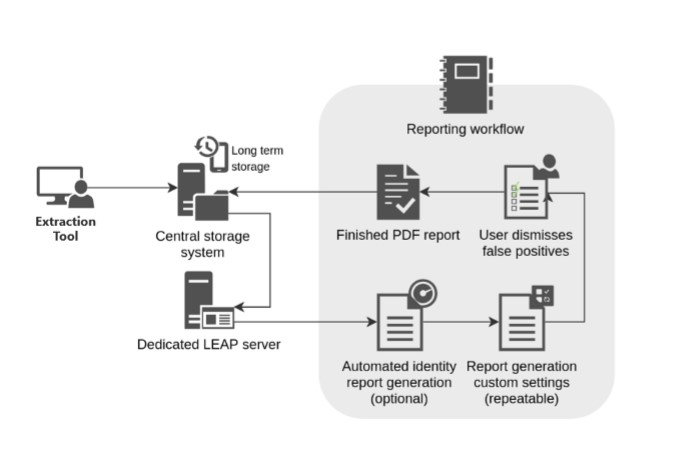Border Security Report2020-07-03 10:00:43
LEAP (Law Enforcement Analytical Platform)
Typical mobile forensic tools require manual steps to configure the analysis process and significant technical knowledge to find and understand the results. LEAP aims to change this approach by providing a fast and automated analysis step, allowing investigation teams to get initial results relevant to the investigation and made informed decisions faster.
Today’s challenges in mobile forensics are reflected in the ever-increasing security of mobile devices, the enormous amount of data contained in them, time consuming analysis, and as a result ever growing backlogs.
T3K-Forensics have designed LEAP to meet these challenges. LEAP scans and assesses large amounts of data in an efficient way - leveraging preconfigured parameters designed to support criminal investigations.
This rapid and automated approach is particularly valuable and applicable in time sensitive situations such border security, rapid response operations and in-lab device prioritization and triaging.
LEAP delivers a focused, automatically generated report that contains an overview of the details relating to the device and its content: IMEI, phone numbers, device model, geolocation data, internet history and user account information, language and dialect detection and communication aggregation (longest calls, most contacted people)and so on.
Additionally, the LEAP report contains detected object classes from media files such as like car license plates, weapons, passports, terror propaganda, maps and various type of screenshots, text detection within images using OCR, indecent images of children and more.
Instead of using generic image recognition, LEAP employs more powerful Deep Learning architecture utilizing object recognition that looks at specific parts of the image or video-frame only and ignores background scenery, achieving higher discovery rates with fewer false positives. LEAP’s machine learning technology can also be used to inspect raw picture and video files uploaded from sources other than mobile devices, for example computer hard drive or USB stick, using the Media Analysis module.
When the investigation requires the inspection and comparison of multiple devices simultaneously, LEAP also allows associations among numerous extractions to be highlighted quickly in an automated report from the Interlink module.
LEAP is able to address a variety of usecases, from immigration control to counterterrorism, human trafficking and discovering crimes against children. Using LEAP holds several advantages over traditional workflows:
Firstly, LEAP provides an authentic overview of the suspect’s device, fast-forwarding the investigation by avoiding delays in the preparation of in-depth manual reports by a forensic laboratory. In this innovative workflow, criminal investigators can use details in the report in minutes, allowing them to focus their investigation and conduct initial interviews with more insight into the suspects activities.
Secondly, LEAP is designed to be intuitive and easy to use, allowing less-technical officers to perform initial analysis steps, delivering immediate feedback in a concise and easy to understand report.
Thirdly, LEAP is fully customizable and can be designed around specific use-cases or requirements specified by the end-user. The system can be trained to detect new object classes, and the platform can be integrated into existing forensic workflows, complimenting other tools by being one of the most versatile solutions in forensic analytics.
